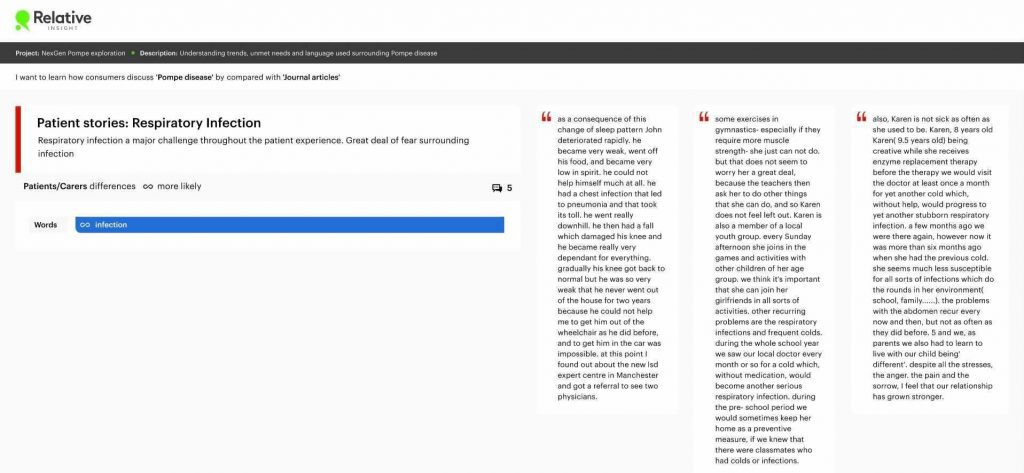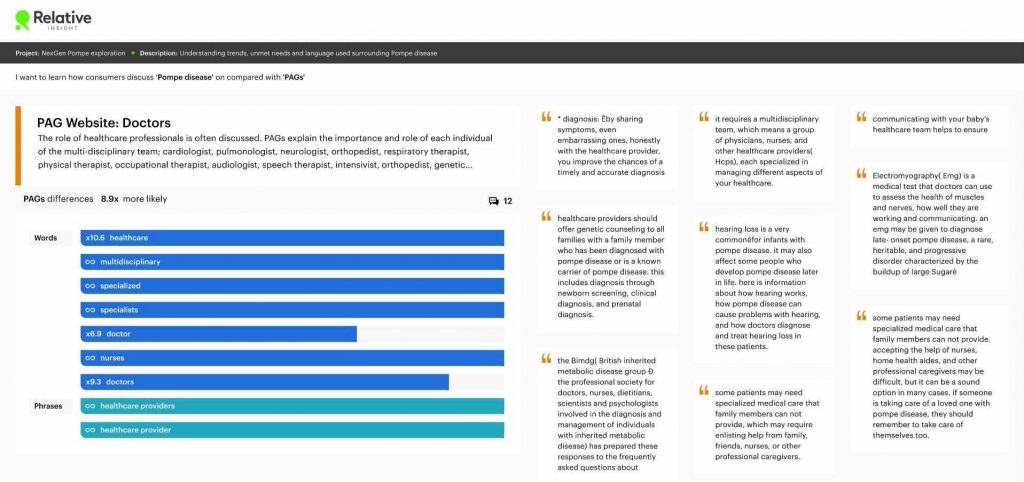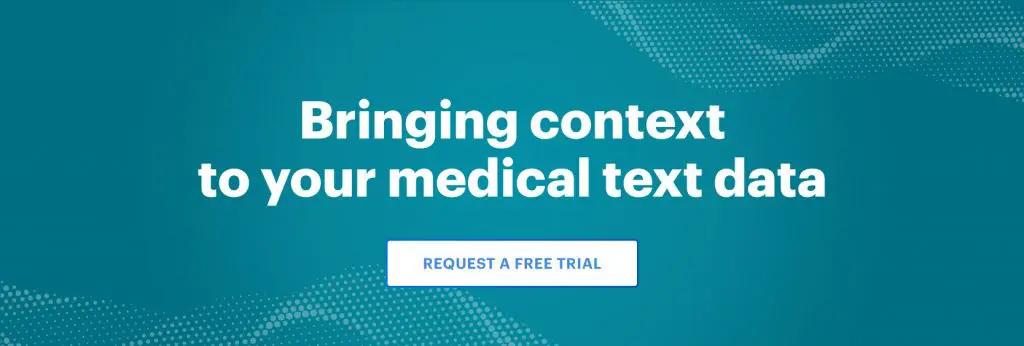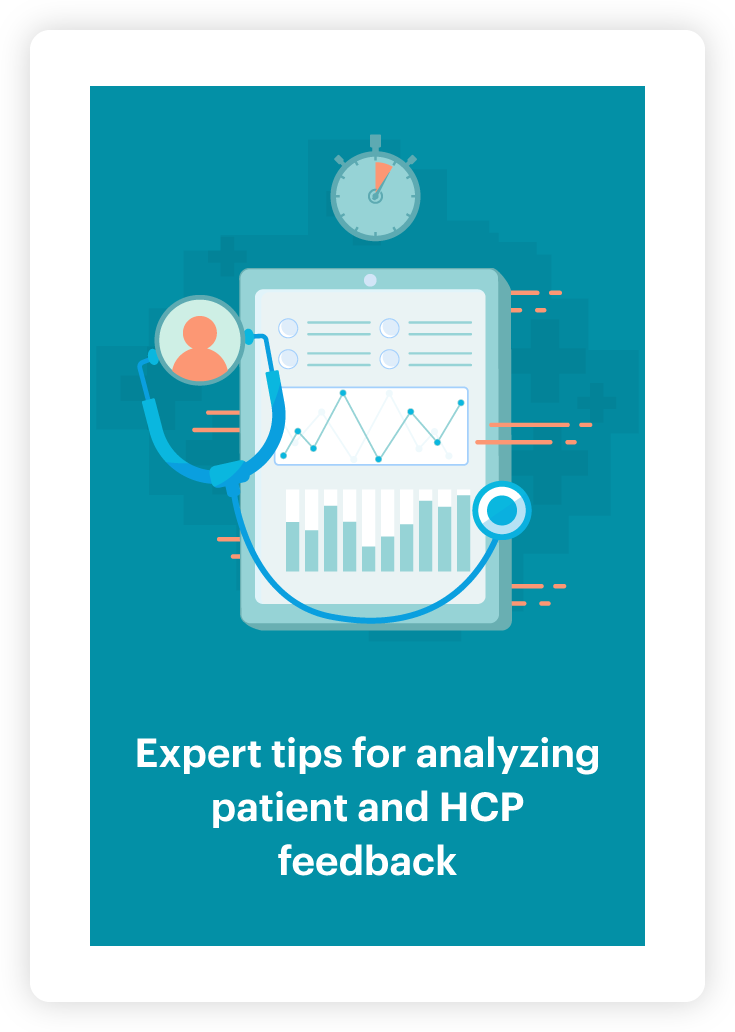Using text analysis for pharmaceutical market research about rare diseases

By Helen Kirkpatrick, Account Manager
Approximately 4% of the world’s population is living with a rare disease, so it turns out that rare diseases aren’t so rare after all. Open-sourced information about rare diseases online is widely accessible and can be a valuable source for gathering pharma market research data. This text data can enable healthcare professionals with meaningful insight into the experiences of those who live with and manage these diseases.
The challenge:
Pharma companies investing in rare diseases often venture into the unknown. With no blueprint of drugs that have been launched before, it is essential to conduct a thorough pharma market research to have an understanding of people’s experiences living with the disease and the health systems they exist in.
Generating insights about such a small patient population is a challenge. Not only that but the patients must not be viewed in isolation. An understanding of healthcare professionals, carers, experts, payers and patient advocacy groups is vital for pharma to determine its place amongst it all. However, with so few people with experience of the disease, how do we gain a holistic view?
We work with an innovative agency called NexGen Healthcare Communications. They create educational content for healthcare professionals and people living with diseases. They also know how to make the most of available sources online for the purposes of pharma market research and have been leading the way in analyzing a wide variety of text sources to gain a holistic view of different therapy areas.
In this example, we leveraged comparative text analysis to better understand a rare disease called Pompe disease. By investigating the disconnects between stakeholders we observed online, we identified potential educational needs.
The expert view and pharma market research
We rapidly analyzed 410 journal article abstracts on PubMed. By comparing what had changed in the prevalence of topics, words and phrases from 2019-2020 compared to 2021, we could plot out a future focused trajectory of the disease. For example, mentions of anti-drug antibodies were 3.6x more prevalent in 2021. This shows with the emergence of therapies also comes the specter of reduced efficacy over time, that HCPs must be prepared for.


The experience of those living with Pompe disease
Recruiting people with rare diseases and their carers for research is notoriously difficult. However, even with a disease like Pompe which affects 1 in 40,000, there is a wealth of information online about the lived experience.
In this case, we found over 40 individual stories and testimonials that existed across patient advocacy websites. By comparing the focus of people and caregivers to the journal abstracts, we could shine a light on the issues that the research community may have lost focus on. Respiratory infection is a prime example. It is not discussed in research papers in 2021, however the patient stories demonstrate infection is a source of fear and anxiety and deeply impacts quality of life.


Patient advocacy groups
Aside from those who live with the disease every day, patient advocacy groups are the experts in rare diseases. They display the most valuable, comprehensive and up-to-date reflection of patient, caregiver and healthcare professional needs. Not only this, but advocacy groups will be important partners at drug launches and beyond.
Gaining an understanding of their agenda is a vital piece of this puzzle. We analyzed website copy from six patient advocacy groups focused on Pompe disease by comparing the copy to the 2021 article abstracts. Areas where advocacy groups focus best reflect the patient experience and display core needs. Here we learned about the complex multidisciplinary team of healthcare professionals that work together to manage Pompe.


pharma market research results
In a matter of days, we had analyzed over 300,000 words focused on Pompe disease. We generated 53 findings that helped us better understand the experience of those living with and managing the disease. From this, we could decipher what their educational needs might be both now and in the future.
But why stop at just PubMed, advocacy websites and patient stories?
Did you know there are 2,300 people discussing their Leukaemia experiences on Reddit; there are 16,000+ news articles that mention Epidermolysis Bullosa this year alone; there is information on 129 clinical trials focused on Gaucher Disease on clinicaltrials.gov; there is 4,600 tweets on IgA Nephropathy on Twitter from this year.
Our software brings measurable metrics to qualitative data sources – in this case by analyzing online sources conversations. If you have healthcare text data which you want to act upon but don’t know where to start, speak to one of our team to learn how Relative Insight Medical can help.

